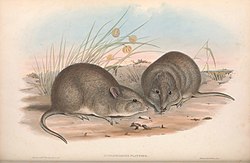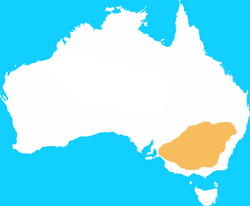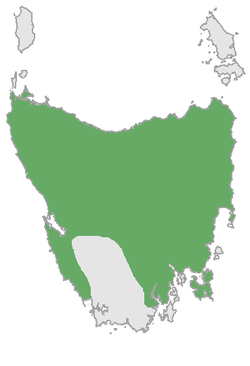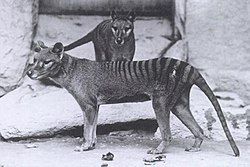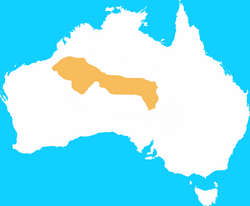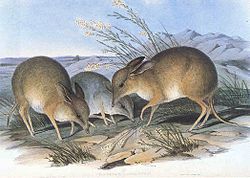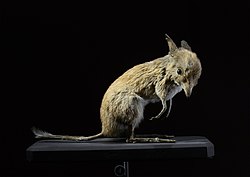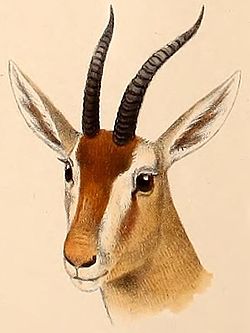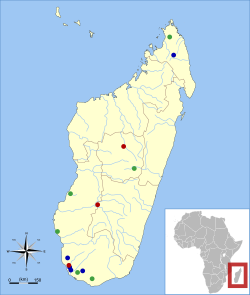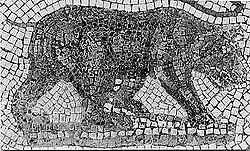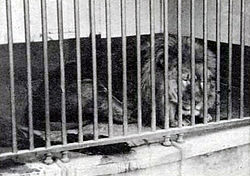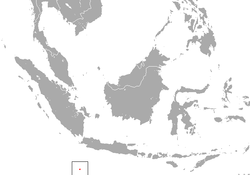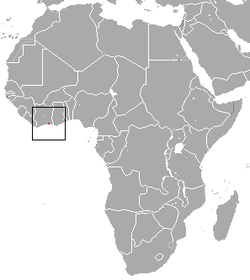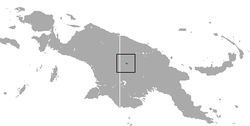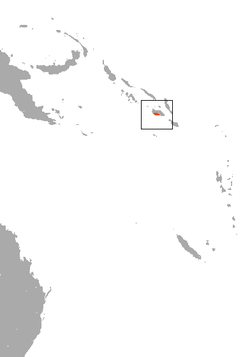Top Qs
Timeline
Chat
Perspective
List of recently extinct mammals
From Wikipedia, the free encyclopedia
Remove ads
Recently extinct mammals are defined by the International Union for Conservation of Nature (IUCN) as any mammals that have become extinct since the year 1500 CE.[1] Since then, roughly 80 mammal species have become extinct.[2]

- Extinct in the wild (EW): 2 species
- Critically endangered (CR): 203 species
- Endangered (EN): 505 species
- Vulnerable (VU): 536 species
- Near threatened (NT): 345 species
- Least concern (LC): 3,306 species
- Data deficient (DD): 872 species
Mammalian species (IUCN, 2020-1)
- 5850 extant species have been evaluated
- 4978 of those are fully assessed[a]
- 3651 are not threatened at present[b]
- 1244 to 2116 are threatened[c]
- 81 to 83 are extinct or extinct in the wild:
- 81 extinct (EX) species[d]
- 2 extinct in the wild (EW)
- 0 possibly extinct [CR(PE)]
- 0 possibly extinct in the wild [CR(PEW)]
- excludes data deficient evaluations.
- NT and LC.
- Threatened comprises CR, EN and VU. Upper estimate additionally includes DD.
- Chart omits extinct (EX) species
Extinction of taxa is difficult to confirm, as a long gap without a sighting is not definitive, but before 1995 a threshold of 50 years without a sighting was used to declare extinction.[1]
One study found that extinction from habitat loss is the hardest to detect, as this might only fragment populations to the point of concealment from humans. Some mammals declared as extinct may very well reappear.[1] For example, a study found that 36% of purported mammalian extinction had been resolved, while the rest either had validity issues (insufficient evidence) or had been rediscovered.[3]
As of June 2023, the IUCN listed 233 mammalian species as critically endangered, while 27% of all mammalian species were threatened with extinction.[4]
Remove ads
Conventions
All species listed here as extinct (no known individuals remaining) are designated by the International Union for Conservation of Nature (IUCN). Species which are extinct in the wild only reside in captivity. Species listed as possibly extinct are classified as being critically endangered, as it is unknown whether or not these species are extinct.[5] Extinct subspecies such as the Javan tiger (Panthera tigris sondaica)[6] are not listed here as the species, in this case Panthera tigris, is still extant. The IUCN Redlist classification for each species serves as a citation, and the superscripted "IUCN" by the date is a link to that species' page. A range map is provided where available, and a description of their former or current range is given if a range map is not available.
Remove ads
Causes of extinction
Summarize
Perspective
Anthropogenic (human caused) habitat degradation is the main cause of species extinctions now. The main cause of habitat degradation worldwide is agriculture, with urban sprawl, logging, mining and some fishing practices close behind. The physical destruction of a habitat, both directly (deforestation for land development or lumber) and indirectly (burning fossil fuels), is an example of this.[7][8]
Also, increasing toxicity, through media such as pesticides, can kill off a species very rapidly, by killing all living members through contamination or sterilizing them. Persistent organic pollutants (POPs), for example, can bioaccumulate to hazardous levels, getting increasingly dangerous further up the food chain.[9]
Disease can also be a factor: white nose syndrome in bats, for example, is causing a substantial decline in their populations and may even lead to the extinction of some species.[10]
Overhunting also has an impact. Terrestrial mammals, such as the tiger and deer, are mainly hunted for their pelts and in some cases meat, and marine mammals can be hunted for their oil and leather. Specific targeting of one species can be problematic to the ecosystem because the sudden demise of one species can inadvertently lead to the demise of another (coextinction) especially if the targeted species is a keystone species. Sea otters, for example, were hunted in the maritime fur trade, and their drop in population led to the rise in sea urchins—their main food source—which decreased the population of kelp—the sea urchin's and Steller's sea cow's main food source—leading to the extinction of the Steller's sea cow.[11] The hunting of an already limited species can easily lead to its extinction, as with the bluebuck whose range was confined to 1,700 square miles (4,400 km2) and which was hunted into extinction soon after discovery by European settlers.[12]
Remove ads
Australia
Island creatures are usually endemic to only that island, and that limited range and small population can leave them vulnerable to sudden changes.[13] While Australia is a continent and not an island, due to its geographical isolation, its unique fauna has suffered an extreme decline in mammal species, 10% of its 273 terrestrial mammals, since European settlement (a loss of one to two species per decade); in contrast, only one species in North America has become extinct since European settlement.[citation needed] Furthermore, 21% of Australia's mammals are threatened, and unlike in most other continents, the main cause is predation by feral species, such as cats.[14]
Extinct species
Summarize
Perspective
A species is declared extinct after exhaustive surveys of all potential habitats eliminate all reasonable doubt that the last individual of a species, whether in the wild or in captivity, has died.[15] Recently extinct species are defined by the IUCN as becoming extinct after 1500 CE.[1]
Remove ads
Extinct subspecies
Remove ads
Extinct in the wild
A species that is extinct in the wild is one which has been categorized by the International Union for Conservation of Nature (IUCN) as only known by living members kept in captivity or as a naturalized population outside its historic range due to massive habitat loss. A species is declared extinct in the wild after thorough surveys have inspected its historic range and failed to find evidence of a surviving individual.[15]
Remove ads
Possibly extinct
Summarize
Perspective
Extinction of taxa is difficult to detect, as a long gap without a sighting is not definitive. Some mammals declared as extinct may very well reappear.[1] For example, a study found that 36% of purported mammalian extinction had been resolved, while the rest either had validity issues (insufficient evidence) or had been rediscovered.[3] As of December 2015, the IUCN listed 30 mammalian species as "critically endangered (possibly extinct)".[4]
Remove ads
See also
Notes
- A 1985 study suggested they may have survived into the 1900s based on local legends of the "comadreja"
- Although, 14C dating points their extinction at 1000 C. E., a 1991 study found they coexisted with humans and survived into the 1500s.[18]
- The species may be functionally extinct.[20]
- The last confirmed sighting is unknown and their range in the wild is unconfirmed. Camera traps in Karnataka, their presumed habitat, found no individuals after 1,084 nights in 2006.[21]
References
Wikiwand - on
Seamless Wikipedia browsing. On steroids.
Remove ads


